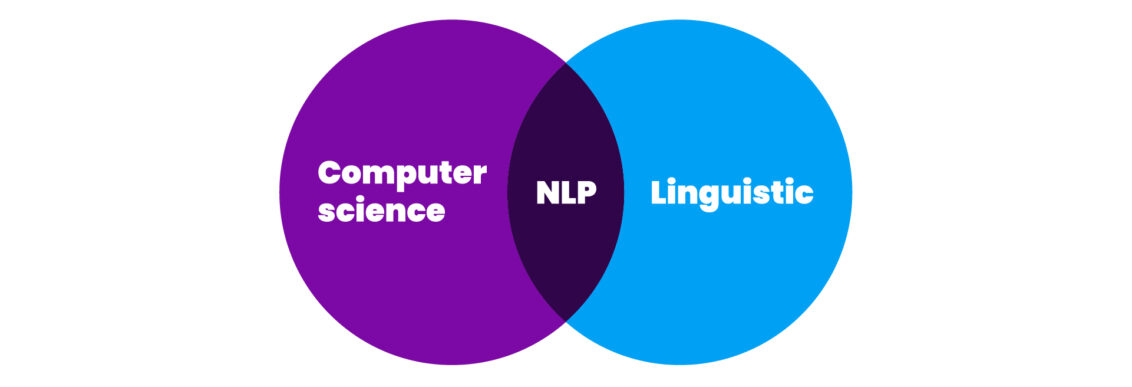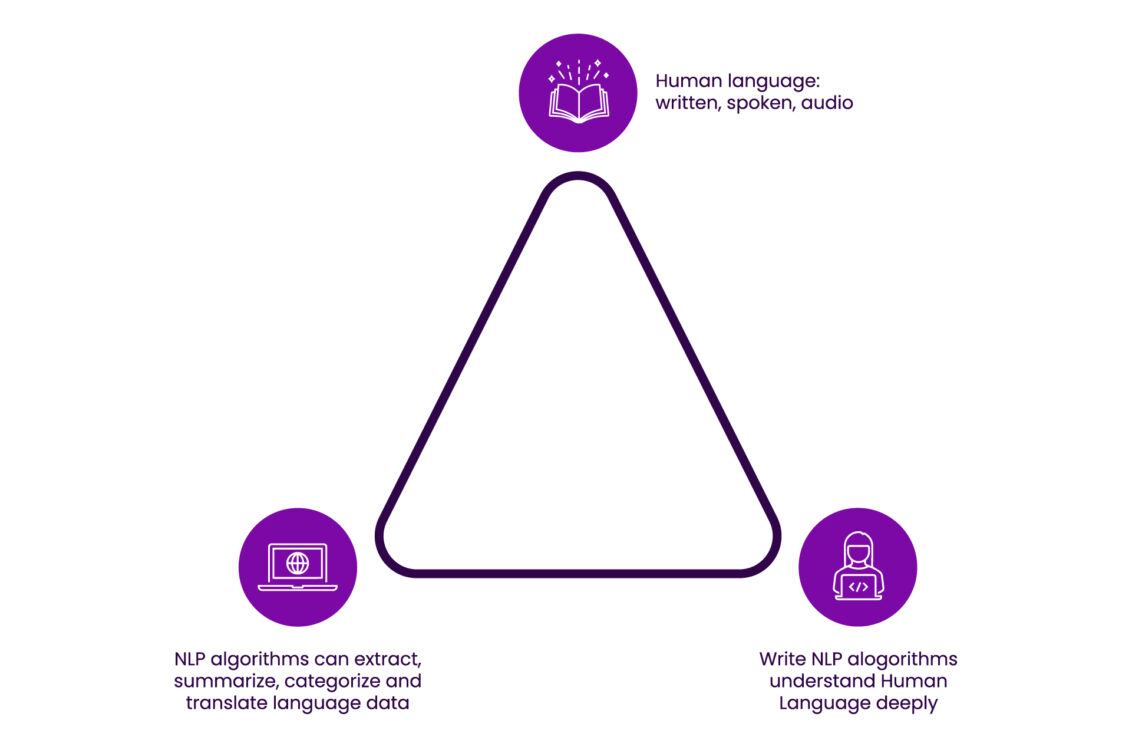Natural Language Processing
Natural Language Processing evolution and its impact on our lives
Language is our primary mode of communication and is present in all facets of our lives, in a variety of forms. The human brain has the remarkable ability to quickly decipher linguistic input and generate relevant information or take appropriate action in response. Natural Language Processing (NLP) is based on automating the analysis of human language to perform a multitude of resource-intensive tasks.
The advancements in NLP technology and its impact on society
In today’s world, natural language processing (NLP) technology is an integral part of many aspects of our daily lives. Whether it’s facilitating machine translations on social media platforms, suggesting answers in emails or enabling voice recognition on domestic assistants, NLP plays a crucial role.
In its early days, language processing relied mainly on rule-based systems, in which linguists or domain experts established the rules for interpreting language. Take the example of an airport assistance website where, as soon as it detects the keyword ‘delay’, the algorithm redirects the message to the relevant department. Although rule-based systems are robust, they are inherently rigid and limited in scope.
As with other areas of technology, NLP has evolved alongside the advent of AI and machine learning algorithms. In addition, advances in parallel computing capabilities and the emergence of deep learning technologies have further boosted the development of models used in NLP. Today, more powerful models are appearing on the market every month.

NLP applications
Several pivotal tasks dominate the landscape of NLP technology, each serving distinct purposes. Text classification, a supervised machine learning endeavor, assigns labels to text pieces, spanning from sentiment analysis to domain-specific tasks like medical diagnosis based on patient records. Text classification is a task we perform at Zortify when we analyze personality traits and dimensions.
Machine translation automates the conversion of natural language from one to another, exemplified by applications like DeepL and Google Translate. Automatic summarization, another crucial NLP task, condenses lengthy documents using extractive or abstractive methods, enhancing accessibility and comprehension.
Information Retrieval (IR) sifts through data pools to extract pertinent information based on queries, revolutionizing search engine functionality by delivering semantically relevant outcomes. Lastly, Natural Language Generation harnesses NLP to generate human language, employed across various tasks including summarization, image captioning, and question answering, showcasing the versatility and power of NLP technology.

NLP Beyond Text
The tasks described above rely only on text as input and produce textual information as output. Additionally, NLP tasks such as Speech recognition, Speech Synthesis, Text to Speech, and Image Captioning are also included. Researchers have also explored multi-modal settings which involves extracting information from inputs that include not only language but also images and videos (and more).
NLP technology has hugely improved over decades and had a leap forward by the invention of transformers based on deep learning technology and is now omnipresent in our modern daily life.
Finally
The evolution of Natural Language Processing (NLP) technology has been remarkable since its early days of rule-based systems. With the emergence of artificial intelligence and machine learning, NLP has emerged as a potent instrument for automating language analysis and executing diverse tasks. From text classification to machine translation, summarization, information retrieval, and natural language generation, NLP is revolutionizing communication and information access. As NLP progresses further, we anticipate even more thrilling advancements and novel applications on the horizon.
Subscribe to our newsletter
Get AI Insights for Modern HR.